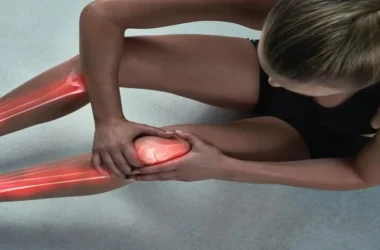Rheumatoid Arthritis (RA) is a chronic autoimmune disease that affects millions of people worldwide. Among the many symptoms associated with RA, numbness and muscle pain can be particularly debilitating.
In this comprehensive guide, we will delve into these Rheumatoid arthritis symptoms, explore their causes, and discuss various treatment options.
RA (Rheumatoid arthritis) Symptoms
- Numbness and Tingling: Many RA patients experience numbness and tingling sensations in their extremities. This is often caused by inflammation of the nerves in the affected joints, which can lead to reduced sensation and discomfort.
- Muscle Pain: RA-related muscle pain can be challenging to distinguish from joint pain. The inflammation and damage caused by RA can extend to the muscles surrounding the affected joints, resulting in discomfort and weakness.
- Joint Pain and Swelling: Joint pain and swelling are hallmark symptoms of RA. The immune system mistakenly attacks healthy joint tissues, causing inflammation, pain, and reduced mobility.
- Fatigue: Chronic fatigue is another common symptom of RA. The combination of pain, inflammation, and the body’s immune response can lead to persistent tiredness.
- Morning Stiffness: RA patients often experience morning stiffness that can last for hours. This stiffness can affect daily activities and gradually improve as the day progresses.
- Fever and Weight Loss: Some RA patients may also develop low-grade fevers and experience unexplained weight loss due to the systemic nature of the disease.
Video [Rheumatoid arthritis – causes, symptoms, diagnosis, treatment]
Credit: Osmosis from Elsevier
Causes of Numbness and Muscle Pain in Rheumatoid arthritis
Numbness and muscle pain in RA are primarily due to inflammation and immune system dysfunction. When the immune system mistakenly attacks the synovium (the lining of the membranes that surround joints), it triggers inflammation.
Over time, this inflammation can extend to the nerves and muscles surrounding the affected joints, leading to the numbness and pain often experienced by RA patients.
Moreover, the chronic inflammation associated with RA can also cause damage to the blood vessels, potentially compromising blood flow to the nerves and muscles, which can exacerbate numbness and discomfort.
Treatment Options:
- Medications: Rheumatologists often prescribe non-steroidal anti-inflammatory drugs (NSAIDs) and disease-modifying anti-rheumatic drugs (DMARDs) to manage inflammation, relieve pain, and slow down the progression of RA.
- Physical Therapy: Physical therapy can be beneficial in managing muscle pain and stiffness. Therapists can devise customized exercise routines to improve joint flexibility and strengthen muscles, thus reducing pain and discomfort.
- Lifestyle Modifications: Making certain lifestyle changes, such as maintaining a healthy diet, getting regular exercise, and managing stress, can help manage RA symptoms, including numbness and muscle pain.
- Biologic Therapies: For severe cases of RA, biologic therapies are an option. These drugs target specific components of the immune system to control inflammation.
- Surgery: In extreme cases, surgical intervention may be necessary to repair damaged joints and alleviate pain.
Conclusion
Numbness, muscle pain, and other RA symptoms can significantly impact an individual’s quality of life. However, with the right combination of medical treatment, physical therapy, and lifestyle adjustments, it is possible to manage these symptoms effectively.
Also Read: How to Prevent Type 2 Diabetes l My Best and Helpful Guide
If you or a loved one is living with RA, consult a rheumatologist to discuss the best treatment plan tailored to your specific needs.
Remember, early intervention and proper management are key to maintaining a fulfilling and pain-free life despite the challenges posed by rheumatoid arthritis.




